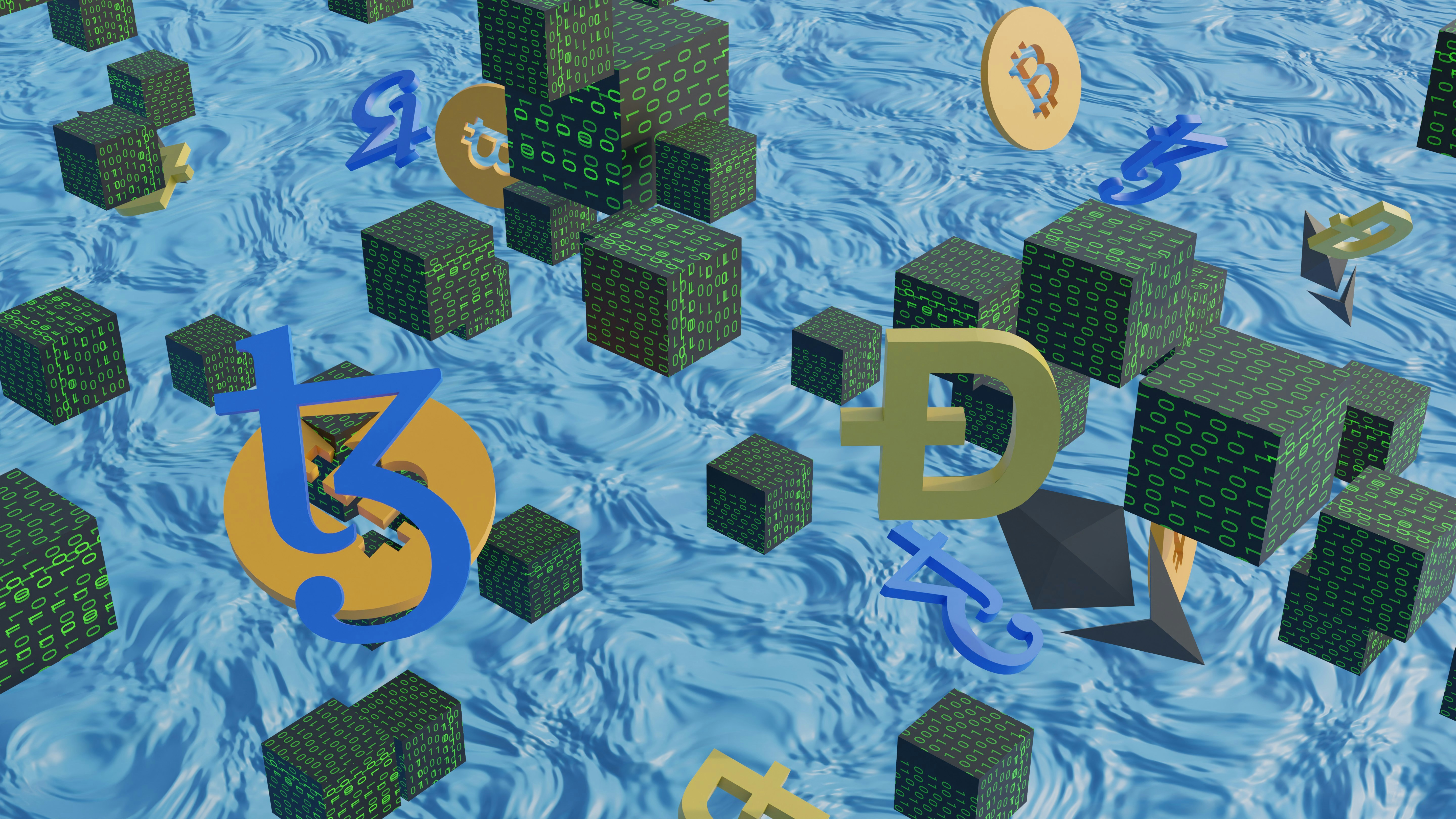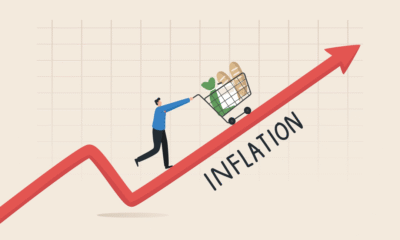Finance
Revolutionizing Trade Finance and Cross-Border Payments: The Impact of Blockchain Technology

Introduction to Trade Finance and Cross-Border Payments
Trade finance and cross-border payments play an essential role in facilitating global commerce by providing the necessary financial support and infrastructure. They ensure that goods and services can be exchanged smoothly between countries, mitigating risks associated with international trade. Trade finance typically encompasses a variety of financial instruments and services, such as letters of credit, export financing, and guarantees, that support sellers and buyers in completing their transactions safely and efficiently.
Cross-border payments, on the other hand, involve the transfer of funds across international borders, which can be complex due to the involvement of multiple currencies, regulations, and banking systems. These payments are crucial for businesses that operate globally, as they need to manage various currencies, transaction fees, and exchange rate fluctuations. Despite the increasing importance of cross-border transactions in today’s economy, traditional methods of trade finance and payment processing often fall short of meeting the demands of modern commerce.
Businesses frequently encounter challenges such as high costs, delays in transaction processing, and lack of transparency when engaging in international trade. Moreover, the involvement of multiple intermediaries in the traditional banking system can lead to significant delays and increased risks of fraud or miscommunication. Given these concerns, there is a pressing need for innovation within this sector. Emerging technologies, particularly blockchain, have the potential to transform trade finance and cross-border payments by streamlining processes, reducing costs, and enhancing security.
This revolution is not only about improving efficiency but also about redefining trust between parties. In a world where instantaneous and secure transactions are becoming a necessity, the implications of integrating blockchain technology into trade finance and cross-border payments are far-reaching and promising. The next sections will delve into how blockchain can address the existing challenges within this critical aspect of global commerce.
Understanding Blockchain Technology
Blockchain technology serves as a revolutionary framework that facilitates secure and transparent transactions. At its core, a blockchain is a type of distributed ledger that records data across many computers in such a way that the registered information cannot be altered retroactively. This distributed nature eliminates the need for a central authority, fostering transparency and trust among participants in various sectors, including finance.
One of the fundamental principles of blockchain is encryption. Each block within the blockchain contains a number of transactions, along with a unique cryptographic hash of the previous block, effectively chaining them together. This cryptographic process ensures that once a block is added to the chain, it becomes almost impossible to alter the data without altering every subsequent block, thereby securing the integrity of the information stored within the blockchain.
Decentralization is another crucial aspect of blockchain technology. In traditional financial systems, a central authority, such as a bank, maintains and controls the ledger. In contrast, blockchain operates on a decentralized network of computers, known as nodes. Each node possesses a copy of the entire blockchain, ensuring that all data is synchronized across the network. This decentralization not only reduces the risk of single points of failure but also empowers users with more control over their transactions.
Additionally, consensus mechanisms play a pivotal role in blockchain operations. These are protocols used to achieve agreement on a single data value among distributed processes or systems. Various consensus algorithms, such as Proof of Work and Proof of Stake, ensure that all participants validate and authenticate transactions before they are recorded onto the blockchain. This collaborative validation process enhances security and trust in the system, making blockchain an ideal solution for trade finance and cross-border payments.
The Challenges of Traditional Trade Finance
Traditional trade finance has long been characterized by several persistent challenges that hinder the efficiency and effectiveness of global transactions. One of the most significant issues is slow processing times. The complexity of documentation required in international trade often leads to delays, as various parties, including banks and other financial institutions, must verify and process these documents manually. This lag can result in missed opportunities for businesses, particularly in fast-paced markets where timing is crucial.
Additionally, high transaction costs are a notable pitfall of conventional trade finance. The involvement of multiple intermediaries, such as banks and shipping companies, typically leads to numerous fees. Businesses often find that these costs significantly eat into their profits, making international trade less attractive. The reliance on intermediaries not only increases expenses but also adds layers of complexity, making the process cumbersome and less streamlined.
Another major challenge revolves around transparency and security issues. The absence of a centralized and immutable record in traditional trade finance can result in discrepancies and disputes between parties. For example, documents can be altered or lost, leading to mistrust, which may delay transactions further. Lack of transparency also complicates the tracking of goods and payments, creating challenges for businesses trying to ensure compliance with regulations and maintain secure operations.
These inefficiencies in traditional trade finance underscore the necessity for alternative solutions. Businesses are increasingly seeking innovations that can alleviate these challenges, thus fostering a shift towards modern methodologies and technologies that promise enhanced operational efficacy. As organizations look for ways to mitigate these ongoing issues, understanding the inherent limitations of traditional systems becomes crucial.
How Blockchain Enhances Trade Finance
Blockchain technology stands as a beacon of innovation, addressing the multifaceted challenges faced in traditional trade finance. One of the primary enhancements provided by blockchain is the introduction of smart contracts. These self-executing contracts, embedded within the blockchain, facilitate seamless transactions by automatically enforcing the terms agreed upon by all parties involved. This not only streamlines processes but also minimizes the potential for disputes, as the contractual conditions are clear and immutable.
Real-time tracking is another significant advantage offered by blockchain. Unlike conventional systems, which often involve multiple intermediaries and manual record-keeping, blockchain allows for transparent and instantaneous updates regarding the status of goods. For instance, platforms like TradeLens, developed by IBM and Maersk, enable stakeholders to track shipping containers in real-time, thereby enhancing visibility and operational efficiency. This feature is critical in mitigating risks associated with delays, allowing businesses to make informed decisions swiftly.
Enhanced security is a core attribute of blockchain technology. The decentralized nature of blockchain makes it resistant to fraud and hacking, as data is distributed across a network of nodes, rather than stored in a single location. Each transaction is recorded in a secure manner, ensuring that all alterations can be traced back to the origin. This level of security is particularly beneficial in trade finance, where the manipulation of documents can lead to significant financial losses.
Moreover, the implementation of blockchain can lead to substantial cost reductions and shorter processing times. By eliminating intermediaries such as banks and clearinghouses, businesses can engage in direct transactions, thus cutting down on fees and delays. A practical example is the use of blockchain-based platforms like We.Trade, which enables companies to facilitate and finance trade transactions efficiently, demonstrating the transformative potential of this technology in revolutionizing cross-border payments.
The Role of Blockchain in Cross-Border Payments
Blockchain technology is increasingly recognized for its capacity to transform cross-border payments, fundamentally altering how transactions are executed on a global scale. Traditional cross-border payment systems often suffer from high transaction fees, lengthy processing times, and a dependency on multiple intermediaries, such as banks or payment processors. However, blockchain offers a decentralized alternative that significantly mitigates these issues.
One of the primary benefits of using blockchain for cross-border payments is the reduction of transaction costs. By bypassing traditional banking systems and their associated fees, blockchain enables participants to send and receive funds at a fraction of the cost. This is particularly advantageous for individuals and businesses making international remittances, as it affords them access to quicker and less expensive services than conventional methods would provide.
In addition to lowering fees, blockchain also enhances the speed of cross-border payments. Transactions that typically take several days to clear can be completed in a matter of minutes or even seconds. This accelerated processing time is crucial for businesses engaged in international trade where timely transactions are essential for maintaining operational efficiency and competitiveness. The instantaneous nature of blockchain transactions can be particularly beneficial for small and medium-sized enterprises (SMEs), which often lack the resources to endure lengthy payment delays.
Moreover, the implications of blockchain technology extend beyond mere cost efficiencies and speed; they also reduce the reliance on traditional banking systems. This emancipation from conventional financial institutions can empower underserved populations and businesses in developing regions, allowing them greater access to global markets. By leveraging blockchain networks, these entities can participate in international trade, opening new avenues for growth and economic development.
In conclusion, the role of blockchain in cross-border payments represents a significant evolution in how financial transactions are conducted globally. By lowering fees, speeding up processes, and diminishing reliance on traditional infrastructure, blockchain not only enhances the current financial landscape but also paves the way for a more inclusive international trade environment.
Challenges and Limitations of Blockchain in Trade Finance
While blockchain technology offers significant potential to revolutionize trade finance and cross-border payments, several challenges and limitations must be addressed before its widespread adoption. One of the primary concerns is scalability. Current blockchain solutions often struggle with high transaction volumes, leading to delays and increased costs. As trade finance encompasses numerous transactions, a system that can efficiently handle a large scale of operations without compromising speed remains essential.
Regulatory hurdles also present a significant barrier to the adoption of blockchain in trade finance. Governments around the world are still in the process of adapting regulations for digital assets and blockchain-based systems. The lack of standardization and clarity regarding the legal implications poses a challenge for businesses contemplating the integration of blockchain technology into their operations. Furthermore, varying regulations across jurisdictions can complicate cross-border transactions, limiting the usability of blockchain for this purpose.
Interoperability with existing systems is another crucial challenge that needs to be addressed. Many organizations currently rely on established financial systems, and integrating blockchain technology without disrupting existing processes can be complex. The successful implementation of blockchain in trade finance requires seamless integration with legacy systems, which includes addressing compatibility issues and ensuring a smooth workflow for involved parties.
Finally, the development of a collaborative ecosystem among stakeholders is vital for the success of blockchain initiatives in trade finance. Various participants, including banks, logistics providers, and government agencies, must work collaboratively to leverage blockchain’s full potential. Fostering trust among these parties is essential, as they must align their interests and share information while maintaining concern for data privacy and security. Thus, while blockchain technology holds promise, recognizing and navigating these challenges is fundamental for successful implementation.
Emerging Trends in Blockchain for Trade and Payments
The landscape of trade finance and cross-border payments is undergoing a significant transformation, largely driven by the adoption of blockchain technology. One of the most impactful trends emerging in this sphere is the rise of Central Bank Digital Currencies (CBDCs). Many countries are exploring or implementing CBDCs as a means to enhance payment efficiency and financial inclusion. These digital currencies leverage blockchain to offer a secure, transparent, and fast alternative to traditional financial systems, thereby promising to streamline cross-border transactions.
Another notable trend is the growing conversation surrounding private versus public blockchains. Private blockchains provide increased control and privacy, making them appealing for businesses that prioritize confidentiality and regulatory compliance. In contrast, public blockchains enhance transparency and accessibility, potentially fostering greater trust in transactions. The duality of these models offers companies the flexibility to choose a blockchain solution that best fits their operational needs, thereby adjusting their trade finance strategies accordingly.
Moreover, fintech companies play a pivotal role in driving innovation within the blockchain space. These companies are increasingly leveraging blockchain technology to create more efficient payment solutions, reduce fraud, and mitigate risks in trade finance. By integrating advanced technologies such as artificial intelligence and machine learning with blockchain, fintechs are enhancing the capabilities of payment platforms, making them faster and more reliable. As competition in this sector intensifies, we can expect a continual influx of innovative applications that will further imbue the industry with agility and resilience.
Looking toward the future, the convergence of these trends suggests a paradigm shift in trade finance and cross-border payment processes. As blockchain technology maturation continues, we may witness its widespread adoption, transforming outdated financial frameworks into modern, efficient systems poised for global trade facilitation.
Regulatory Considerations for Blockchain Adoption
The rapid evolution of blockchain technology has prompted significant changes in regulatory frameworks, particularly concerning trade finance and cross-border payments. As businesses explore the integration of blockchain solutions into their operations, it is crucial to understand the regulatory landscape they must navigate. One prevalent issue is compliance with existing laws and regulations. Companies need to ensure that their blockchain applications conform to national and international legal standards, which can vary dramatically between jurisdictions.
Furthermore, anti-money laundering (AML) guidelines are especially pertinent in the blockchain context. The transparency provided by blockchain can facilitate compliance with AML regulations, but businesses must implement rigorous monitoring procedures to detect and prevent illicit activities. This includes conducting thorough due diligence on transactions and entities engaging in blockchain-based trade practices. Regulatory bodies are increasingly scrutinizing the application of blockchain in financial transactions to ensure that the technology does not inadvertently facilitate money laundering or other financial crimes.
Establishing a robust legal framework is essential for supporting blockchain transactions in trade finance and payments. Governments and regulatory authorities are called upon to provide clear guidelines that delineate the rights and responsibilities of parties involved. These regulations should address issues such as smart contract enforceability, privacy concerns, and the disposition of digital assets. Having a solid legal foundation will not only foster trust among stakeholders but also encourage wider adoption of blockchain solutions.
It is also worth noting that as blockchain technology matures, regulators are likely to adapt and refine their approaches. Engaging with policymakers and participating in dialogues around blockchain regulations can help ensure that businesses stay compliant and contribute to the development of a favorable regulatory environment. Therefore, businesses looking to implement blockchain solutions must remain proactive in understanding and addressing these regulatory considerations.
Conclusion and Future Outlook
In summarizing the impact of blockchain technology on trade finance and cross-border payments, it is vital to recognize the paradigm shift that it brings to traditional financial systems. The ability of blockchain to provide transparency, enhance security, and streamline processes has positioned it as a crucial component in modernizing trade finance. From mitigating risks associated with fraud to minimizing transaction times and costs, blockchain facilitates a smoother and more efficient flow of capital across borders.
The transformation of trade finance driven by blockchain encompasses a variety of solutions, including smart contracts and decentralized ledgers. These innovations enable stakeholders to track transactions in real-time, fostering trust among parties involved in the supply chain. As businesses continue to embrace these technologies, we can expect significant reductions in administrative burdens and an increase in operational efficiency, ultimately benefiting global commerce.
Looking toward the future, the integration of blockchain within financial ecosystems is anticipated to grow exponentially. As major institutions and fintech companies invest in research and development, we may witness the emergence of hybrid models that combine the strengths of blockchain with existing financial frameworks. Furthermore, the incorporation of artificial intelligence and machine learning in conjunction with blockchain may further enhance capabilities. This synergy could lead to the creation of autonomous financial systems capable of making real-time decisions based on comprehensive data analysis.
As we progress into this new era, it is essential for businesses, regulators, and technology providers to collaborate effectively. Addressing challenges such as regulatory compliance and interoperability between different blockchain networks will be key to unlocking the full potential of this technology. In conclusion, the future of trade finance and cross-border payments appears promising, with blockchain technology poised to revolutionize how transactions are conducted globally.
Investing
Global Investor Outflows from U.S. Stocks & Dollar

In a shift that is sending ripples across financial markets, institutional investors around the world are pulling back from U.S. equities and reducing exposure to the U.S. dollar, signaling a significant change in sentiment toward American assets. According to the latest Bank of America Global Fund Manager Survey, global investors are now the most underweight on U.S. stocks in more than two decades, with the dollar facing similar skepticism as a long-term safe-haven asset. This transition is being fueled by multiple converging factors, including geopolitical instability, growing U.S. fiscal deficits, trade tensions, and an increasingly favorable investment climate in Europe and select emerging markets. For investors, economists, and policymakers alike, this trend represents a rebalancing of global capital flows that could reshape market dynamics in the months ahead.
Investor Sentiment Toward U.S. Markets Hits Multi-Year Lows
The Bank of America survey, considered a key barometer of global institutional sentiment, reveals that fund managers have turned heavily underweight on U.S. stocks and the dollar, preferring instead to rotate their portfolios into European and Asian equities. The survey showed that 36% of participants are now net underweight U.S. equities—the highest level since 2003. At the same time, positioning on the dollar turned net negative for the first time in over five years, with investors citing mounting fiscal concerns, valuation extremes, and weakening macroeconomic indicators.
The U.S. equity market, especially the tech-heavy NASDAQ, has experienced an extraordinary bull run over the last several years. But now, investors are questioning the sustainability of elevated valuations, particularly as economic growth slows, earnings forecasts are revised downward, and inflation remains persistently above target. Many portfolio managers believe the best returns may no longer be found in U.S. assets alone.
Rising U.S. Debt and Fiscal Deficits Raise Red Flags
A key driver of investor caution is the ballooning U.S. fiscal deficit. The Congressional Budget Office (CBO) projects that the U.S. federal deficit will reach over $1.8 trillion this year, driven by increased government spending, rising interest costs, and lower-than-expected tax revenues. The national debt is now projected to exceed 125% of GDP by 2030, raising serious questions about long-term fiscal sustainability.
Investors fear that soaring U.S. debt levels could lead to a loss of confidence in Treasury securities, pushing yields higher and triggering volatility in global credit markets. This concern is magnified by the growing political polarization in Washington, which has led to repeated debt ceiling standoffs and policy gridlock. As a result, some asset managers are choosing to diversify their bond portfolios with sovereign debt from countries like Germany, Canada, and Australia—nations viewed as having stronger fiscal discipline.
Geopolitical Tensions Erode Dollar Safe-Haven Appeal
The traditional role of the U.S. dollar as a global safe-haven currency is also being called into question. With the U.S. now embroiled in rising geopolitical conflicts, including its military engagement in the Middle East and an escalating trade war with China, the perception of the dollar as a “neutral” or stable currency is beginning to fade. Several countries, particularly in the Global South, have voiced frustration over the dominance of the dollar in international trade, and some have even accelerated efforts to settle trade in alternative currencies such as the euro, yuan, or local currency blocs.
In response, central banks in emerging markets are reducing their U.S. dollar reserves and increasing holdings in gold and non-dollar currencies. This trend, while gradual, is gaining momentum and contributing to the dollar’s underperformance against a basket of global currencies. The U.S. dollar index (DXY) has declined by nearly 6% year-to-date, reflecting both diminished investor confidence and a broader reconfiguration of reserve management strategies.
Attractive Valuations Abroad Drive Capital Outflows
While risks in the U.S. are mounting, attractive investment opportunities abroad are also contributing to the outflow of capital from American markets. European equities, particularly in sectors like green energy, luxury goods, and financial services, are seeing renewed interest thanks to relatively low valuations and improving macroeconomic stability. The recent ECB rate cuts and Eurobond discussions have added to optimism about the region’s fiscal and financial integration.
In Asia, countries like India, Indonesia, and Vietnam are emerging as new hotspots for foreign direct investment and equity inflows. These economies offer robust growth prospects, younger demographics, and increasingly tech-driven industries. Additionally, Japan’s bond market is seeing increased institutional buying, as long-term yields rise in response to the Bank of Japan’s policy changes.
This global diversification strategy is not just about seeking higher returns—it’s also about managing risk. Investors are increasingly looking to balance their portfolios geographically, reducing dependence on any single region and hedging against macroeconomic shocks that may be specific to the U.S.
Currency Hedging and Diversification as Defensive Strategies
In response to the dollar’s volatility, many fund managers are now engaging in currency hedging strategies to protect their portfolios. Currency ETFs, options, and forward contracts are being used to minimize the downside risk of a weakening dollar. At the same time, global investment funds are ramping up their exposure to non-dollar-denominated assets, including eurozone corporate bonds, emerging market debt, and local-currency sovereign issues.
Moreover, ESG and green bond markets in Europe and Asia are attracting capital due to their alignment with global sustainability goals. These instruments not only offer diversification but also align with broader institutional mandates on responsible investing.
Implications for U.S. Markets and Monetary Policy
The capital flight from U.S. assets could have significant implications for American markets. A persistent decline in foreign demand for U.S. Treasuries may force the Federal Reserve to intervene more frequently in the bond market to maintain liquidity and control yields. At the same time, a weaker dollar could contribute to imported inflation, complicating the Fed’s efforts to bring core inflation back within its target range.
On the equities side, if investor outflows persist, U.S. companies may face higher capital costs and declining valuations, particularly in sectors that rely heavily on foreign investment or exports. Domestic pension funds and institutional investors may need to fill the gap left by global investors, which could further alter asset allocation strategies and influence corporate financing decisions.
A New Era of Global Capital Rotation
The growing shift away from U.S. stocks and the dollar signals the beginning of a new era in global investing, one defined by diversification, geopolitical hedging, and currency rebalancing. While the U.S. remains a central player in global finance, the days of unquestioned dominance are beginning to fade, as investors embrace a more nuanced and distributed view of risk and opportunity.
For market participants, staying agile in this environment means tracking global fund flows, monitoring geopolitical developments, and reassessing the traditional U.S.-centric portfolio model. As capital continues to flow into European and Asian markets, the future of global finance is being rewritten—and those who adapt early may find themselves ahead of the curve.
Finance and Economy
France Pushes Eurozone Toward Joint Eurobond Issuance

In a bold move that could redefine the financial architecture of the European Union, France has renewed its push for the issuance of joint eurozone debt instruments – commonly referred to as Eurobonds – as a way to strengthen the euro on the global stage. As the EU prepares for its upcoming summit on June 26-27, the proposal is once again stirring heated debate among member nations. French officials argue that a shared debt mechanism is essential not only for financial resilience but also for elevating the euro’s standing as a credible alternative to the U.S. dollar. While the idea garners support from key institutions like the IMF and the ECB, resistance from fiscally conservative member states continues to block consensus. This article explores the implications of France’s proposal, the potential benefits and challenges of Eurobond issuance, and the evolving role of the euro in a multipolar financial world.
France’s Strategic Case for Eurobonds
French President Emmanuel Macron and Finance Minister Bruno Le Maire have long been advocates for deeper EU financial integration. According to them, Eurobonds would represent a tangible step toward fiscal solidarity and monetary cohesion, allowing member nations to borrow at collectively favorable rates while demonstrating political unity. The latest push comes at a time when the European economy is facing several headwinds: slowing growth, fragmented recovery across member states, and heightened global financial volatility triggered by geopolitical conflicts and energy insecurity. Macron has reiterated that a common debt tool is essential for financing major EU-wide projects such as green energy transition, digital infrastructure, and military defense.
From a strategic standpoint, France views Eurobonds as more than just a financial mechanism – they are a symbol of EU credibility and resilience. By pooling risk and aligning borrowing capacity, the eurozone could present a united front in capital markets, reducing the vulnerability of weaker economies and improving the euro’s attractiveness to foreign investors.
The Euro’s Current Global Standing and Its Challenges
Despite being the world’s second most-used currency, the euro still lags far behind the U.S. dollar in terms of global reserve share, trade settlement, and safe-haven preference. Analysts point out that one of the primary reasons for this is the fragmented nature of the eurozone bond market. Each country issues its own sovereign debt, leading to a lack of a single, risk-free eurozone bond benchmark – unlike U.S. Treasuries, which offer deep liquidity and low risk.
France’s proposal seeks to address this imbalance. A unified Eurobond market could create a highly liquid, stable, and scalable financial product that would attract central banks, pension funds, and sovereign wealth investors. Over time, this could shift more global reserves into euros, boosting the currency’s influence in global trade and finance.
Institutional Support: IMF, ECB, and Market Participants
Key international organizations have thrown their weight behind the idea. The International Monetary Fund (IMF) has suggested that Eurobonds could enhance the EU’s fiscal capacity and crisis response agility. Meanwhile, European Central Bank (ECB) officials, including President Christine Lagarde, have hinted that deeper fiscal integration is necessary for the euro to realize its full potential.
Financial market participants have also shown interest. Asset managers argue that Eurobonds could become a cornerstone of fixed-income portfolios, particularly for investors looking to diversify away from dollar-denominated assets. Some analysts compare the opportunity to the creation of the U.S. Treasury market in the post-war era, which laid the groundwork for the dollar’s global dominance.
Opposition from the Frugal Four and Risk-Sharing Concerns
Despite France’s enthusiasm and institutional support, significant opposition persists from fiscally conservative EU nations, notably Germany, Austria, the Netherlands, and Finland—often dubbed the “Frugal Four.” These countries argue that shared debt would penalize responsible fiscal behavior and open the door to moral hazard, where weaker economies might overborrow under the protection of joint guarantees.
German officials have also cited constitutional constraints and public opposition to any perceived “debt mutualization.” Instead, they advocate for reforms at the national level, more stringent budget controls, and the use of existing mechanisms like the European Stability Mechanism (ESM) for crisis funding.
This divide continues to stall formal negotiations. At the heart of the debate is the question of trust and fiscal governance, as many northern states remain skeptical about the long-term commitment of their southern counterparts to austerity and budget discipline.
Implications for Financial Markets and Investors
If approved, Eurobonds would be a game-changer for European capital markets. They would offer a new safe asset class, potentially rivaling U.S. Treasuries in size and reliability over the long term. For the European banking system, Eurobonds could provide high-quality collateral and improve liquidity conditions, especially for cross-border lending.
Investors are closely monitoring the situation. If the EU takes concrete steps toward joint bond issuance, bond yields across peripheral economies like Italy, Spain, and Greece could compress further, as risk premia shrink in anticipation of shared guarantees. Simultaneously, euro-denominated assets may see a surge in foreign inflows, especially from central banks seeking to rebalance reserve portfolios.
Strengthening the Euro’s Role in a Multipolar World
The geopolitical landscape is increasingly defined by multipolarity, with China, Russia, and the U.S. competing for influence in trade, finance, and security. In this context, the eurozone faces a historic opportunity to carve out a more assertive role. Strengthening the euro through fiscal and capital market integration is seen as essential to counterbalance the dollar’s dominance and reduce reliance on U.S.-led financial infrastructure.
Eurobonds could serve as a financial pillar in this transition. As global investors seek alternatives in a fragmented world economy, the euro’s rise as a stable, investable, and liquid currency backed by joint instruments could bolster its credibility and utility.
A Defining Moment for European Unity
France’s push for Eurobonds is more than just a fiscal proposal – it is a call for political and financial unity in a time of global uncertainty. While the road to consensus is steep, the growing support from institutions, investors, and southern EU members suggests that momentum is building. The upcoming EU summit will be a crucial test of the bloc’s ability to move beyond national interests and toward a shared financial future.
If successful, Eurobond issuance could redefine the eurozone’s role in the global economy, offering new tools for crisis response, economic development, and financial competitiveness. For investors and policymakers alike, this moment marks a critical juncture – either Europe seizes the opportunity to lead, or it risks remaining a secondary player in a rapidly evolving financial world.
Finance and Economy
Oil Price Spike as Middle East Conflict Deepens: A Global Market Wake-Up Call

The financial world is once again on high alert as escalating tensions in the Middle East have triggered a sharp surge in global oil prices, sending shockwaves through equity, commodity, and currency markets alike. With the U.S. reportedly striking Iran’s nuclear sites, Brent crude surged over 18%, nearing $80 per barrel in a matter of hours. The sudden volatility reignited fears of a potential $100 oil scenario, reminiscent of past geopolitical flashpoints that deeply impacted global supply chains, inflation expectations, and central bank policy stances. This article delves into the causes, consequences, and global financial implications of this emerging crisis.
The Trigger: U.S. Strikes on Iran’s Nuclear Infrastructure
On June 21, 2025, international news outlets confirmed that U.S. military forces had targeted Iranian nuclear facilities in what they described as a “pre-emptive defensive measure.” While the full extent of the damage is still being assessed, the attack has clearly escalated tensions in an already volatile region. The Middle East, being a vital hub for global oil production and shipping, plays a significant role in maintaining supply stability. Iran, which controls access to the Strait of Hormuz – a key chokepoint through which nearly 20% of the world’s oil supply passes—responded with threats to close the strait and intensify its military posturing. This heightened the risk premium in energy markets virtually overnight.
Oil Prices React Swiftly to Geopolitical Instability
Crude oil, especially Brent and West Texas Intermediate (WTI), reacted with extreme sensitivity to the developments. Brent crude jumped over 18% within a 24-hour period, while WTI saw a comparable surge. Analysts at Goldman Sachs and JPMorgan warned that if the Strait of Hormuz were to be blocked, prices could surpass $100 per barrel within weeks. The last time the oil market saw such an intense geopolitical premium was during the 2019 drone attacks on Saudi oil facilities. However, the current situation has a more severe undertone due to the involvement of nuclear assets and direct military strikes between two powerful adversaries.
Safe Haven Assets Soar as Risk Appetite Declines
As is common in times of geopolitical crisis, investors flocked to safe-haven assets such as gold, the U.S. dollar, and U.S. Treasuries. Gold climbed above $2,400 per ounce, a level not seen in years, while the U.S. dollar index rose nearly 2% as capital fled emerging markets and riskier assets. Meanwhile, 10-year U.S. Treasury yields fell sharply, reflecting a surge in demand for perceived low-risk instruments. Cryptocurrency markets, particularly Bitcoin, experienced a brief rally as some investors viewed digital assets as alternative stores of value, although that rally quickly reversed amid broader market instability.
Stock Markets Face Broad Sell-Off, Led by Energy-Sensitive Sectors
Equity markets around the globe responded negatively. The S&P 500 and NASDAQ both dropped over 2.5% in intraday trading, led by declines in consumer discretionary, industrials, and airline stocks, which are highly sensitive to fuel price increases. European indices such as the FTSE 100 and DAX also saw steep losses, while Asia-Pacific markets like the Nikkei 225 and Hang Seng Index fell sharply as investors priced in a higher global risk premium. Interestingly, energy stocks provided the only bright spot in an otherwise red sea of market activity, with companies like ExxonMobil and Chevron posting strong gains on expectations of rising revenues.
Inflationary Pressures Could Derail Central Bank Strategies
The surge in oil prices couldn’t have come at a worse time for global central banks. After years of battling inflation through aggressive interest rate hikes, many central banks had only just begun to pause or consider rate cuts in 2025. However, higher energy prices feed directly into inflation, particularly in transport, manufacturing, and agriculture sectors, potentially forcing monetary authorities to reverse their dovish pivot. The European Central Bank (ECB), which had recently initiated its first rate cut in years, may now face pressure to hold off on further easing. Similarly, the Federal Reserve, which had opted to maintain its current rate in the last FOMC meeting, is likely to adopt a more hawkish tone moving forward.
Emerging Markets Bear the Brunt of the Crisis
The fallout from spiking oil prices is especially damaging for emerging markets, which are typically more sensitive to commodity price fluctuations. Countries like India, Turkey, and South Africa, which are major oil importers and have significant current account deficits, saw their currencies depreciate against the dollar. This adds to inflationary pressures and increases the cost of dollar-denominated debt, complicating fiscal and monetary policy responses. Foreign institutional investors also withdrew capital from these markets, adding to equity market stress and further depressing sentiment.
Global Economic Growth at Risk
Economists are revising down global GDP forecasts amid fears that higher oil prices will dampen consumer spending, elevate production costs, and destabilize corporate earnings. According to the IMF, a sustained oil price above $90 could reduce global GDP growth by 0.5% annually, with some regions like Southeast Asia and Sub-Saharan Africa experiencing even greater negative impacts. Supply chains, already recovering from post-pandemic disruptions and trade tensions, now face renewed uncertainty due to potential shipping bottlenecks in the Persian Gulf.
Outlook: What Comes Next for Markets and Policymakers?
Going forward, much depends on how the situation in the Middle East evolves. A de-escalation through diplomatic channels, possibly via UN or EU mediation, could stabilize oil prices and soothe market nerves. On the other hand, if Iran follows through on its threat to block the Strait of Hormuz or retaliates militarily, the crisis could escalate into a full-blown regional conflict with severe repercussions for global trade and energy supply. Policymakers worldwide are monitoring the situation closely, and emergency meetings by OPEC and G20 finance ministers are already being planned. The International Energy Agency (IEA) has also signaled its willingness to release strategic petroleum reserves if needed to calm markets.
The Road Ahead is Uncertain but Manageable
In the face of rising geopolitical tensions and economic uncertainty, investors are advised to adopt a cautious, diversified approach. While markets remain volatile and unpredictable, sound investment principles – such as maintaining a balanced portfolio, avoiding over-leveraged positions, and focusing on long-term fundamentals – remain more relevant than ever. The oil price spike triggered by the U.S.-Iran conflict is a potent reminder of how global politics and finance are deeply intertwined, and why staying informed and agile is critical in today’s interconnected world.
-

 Finance & Investment6 months ago
Finance & Investment6 months agoEmerging Markets to Watch in 2025: Opportunities and Risks
-

 Technology and Finance8 months ago
Technology and Finance8 months agoThe Future of Quantum Computing in Financial Modeling and Trading
-

 Finance7 months ago
Finance7 months agoUSA Market Trends & Global Finance Insights
-
Finance7 months ago
Navigating Retirement in the Gig Economy: Challenges and Solutions
-

 Finance8 months ago
Finance8 months agoNavigating Personal Finance in the Age of Inflation and High Interest Rates
-

 Economics6 months ago
Economics6 months agoGlobal Markets React to U.S. GDP Contraction: A Comprehensive Analysis
-

 Investing & Finance8 months ago
Investing & Finance8 months agoFractional Investing: The Path to Wealth Democratization
-

 Finance7 months ago
Finance7 months agoTop 10 High-Yield Savings Accounts in the US (2025 Edition)




